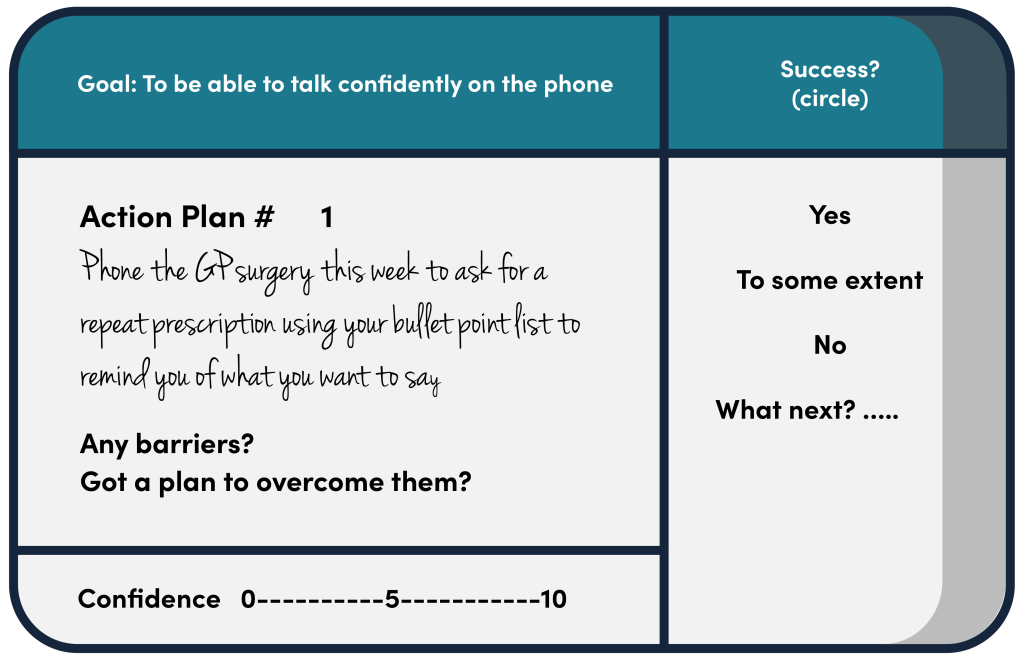Action Planning
What?
Action plans act as incremental ‘stepping stones’ towards goal achievement.
Action plans often become homework for the person to complete outwith scheduled sessions.
A good action plan is SMART:
- Specific (details exactly what the person has to do in their own words)
- Measurable (success of completion easily assessed)
- Achievable (represent the next achievable step to work towards the goal)
- Relevant (directly linked to the patient’s goal)
- Timed (date specified for completion in the immediate future; days not weeks).
How?
The staff member and person discuss the first ‘stepping stone’ to work towards the goal – “OK, so what’s the first thing we need to do to achieve this goal?”
It doesn’t matter who comes up with the action plan or if it’s a combined effort. The important thing is that the both agree on it.
The action plan should be written so that the person understands exactly what has to be done.
Why?
The purpose of an action plan is to motivating the person to get from intention (“this is what I want to achieve”) into action (“this is what I’ve done to try and achieve it”)
Successful action plan completion supports the person to build the skills and confidence necessary to achieve their goal.
Unsuccessful action plan completion creates an important opportunity for the person to reflect on and learn from setbacks and for the staff member to provide feedback and support.
Outcome of this stage
The staff member and person agree on an action plan(s) to work towards the set goal.
Action plan examples:
- “Complete your breathing exercises twice a day over the next week”
- “Walk to the lamp post and back, using your stick and with your wife walking beside you, twice a day for the next 4 days”
- “Before our next session read the information sheet about fatigue and write a list of activities that (i) give you energy and (ii) use up your energy”
- “Make a cup of tea using your right hand for 90% of the task, twice a day for the next week”
- “Phone the GP surgery this week to ask for a repeat prescription using your bullet point list to remind you of what you want to say”
Documentation in G-AP record

